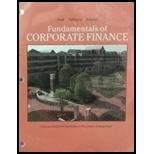
Financial Statements:
Financial statements are the accounting reports of any organization that are prepared with a purpose to disclose its past performance and also the assets and liabilities of the company along with the finances. These statements are prepared either on an annual basis or on a quarterly basis.

Cash Flow Statement − The cash flow statement represents the amount of cash that flows in and out of a business for a particular time period. It is mostly prepared on the accrual basis of accounting. The cash flow statement considers the fact that the net profit which a company earns in a year is not necessarily in the form of cash. It can be in the form of other assets as well like the receivables, inventory and so on. Therefore, the cash flow statement represents the total amount of cash that moves into a business organization.
Changes In The Shareholder’s Equity − The changes in the shareholder’s equity represents the changes in the amount of the
To Identify:
The change in the book value of equity of company G from the year 2015 to 2016 according to the given table and whether that implies an increase in the market price of the shares or not.
Want to see the full answer?
Check out a sample textbook solution
Chapter 2 Solutions
Fundamentals of Corp. Fin. (Looseleaf)(Custom)
 Essentials Of InvestmentsFinanceISBN:9781260013924Author:Bodie, Zvi, Kane, Alex, MARCUS, Alan J.Publisher:Mcgraw-hill Education,
Essentials Of InvestmentsFinanceISBN:9781260013924Author:Bodie, Zvi, Kane, Alex, MARCUS, Alan J.Publisher:Mcgraw-hill Education,

 Foundations Of FinanceFinanceISBN:9780134897264Author:KEOWN, Arthur J., Martin, John D., PETTY, J. WilliamPublisher:Pearson,
Foundations Of FinanceFinanceISBN:9780134897264Author:KEOWN, Arthur J., Martin, John D., PETTY, J. WilliamPublisher:Pearson, Fundamentals of Financial Management (MindTap Cou...FinanceISBN:9781337395250Author:Eugene F. Brigham, Joel F. HoustonPublisher:Cengage Learning
Fundamentals of Financial Management (MindTap Cou...FinanceISBN:9781337395250Author:Eugene F. Brigham, Joel F. HoustonPublisher:Cengage Learning Corporate Finance (The Mcgraw-hill/Irwin Series i...FinanceISBN:9780077861759Author:Stephen A. Ross Franco Modigliani Professor of Financial Economics Professor, Randolph W Westerfield Robert R. Dockson Deans Chair in Bus. Admin., Jeffrey Jaffe, Bradford D Jordan ProfessorPublisher:McGraw-Hill Education
Corporate Finance (The Mcgraw-hill/Irwin Series i...FinanceISBN:9780077861759Author:Stephen A. Ross Franco Modigliani Professor of Financial Economics Professor, Randolph W Westerfield Robert R. Dockson Deans Chair in Bus. Admin., Jeffrey Jaffe, Bradford D Jordan ProfessorPublisher:McGraw-Hill Education





